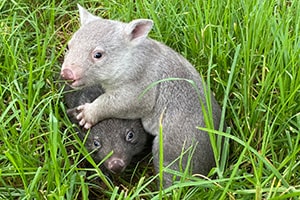Beak and Feather Disease
(aka Psittacine Circoviral Disease, PCD, ‘Runners’)
Affected species
BFDV is common in parrots, cockatoos and lorikeets, but strains of the virus have also been confirmed in other bird species such as a Black-faced Cuckoo-shrike and in raptors. It particularly affects juveniles and young adults. Older adults may develop immunity but can still be carriers.
Cause
The psittacine circovirus occurs naturally in the wild and can persist for many years in tree hollows and other nest sites. The virus multiplies in the liver and can be transmitted orally or in faeces or feathers. It is highly contagious. The virus attacks feather and beak cells, causing abnormalities. It also attacks the immune system. Most birds eventually die from the disease or from secondary infections.
Diagnosis
Clinical signs are highly variable depending on the age and species of bird. The progression of the disease is also highly variable. Signs of acute infection include diarrhoea, weight loss, anorexia, depression and death. Chronic infections may result in abnormal feathers, loss of powder down, beak changes and immunosuppression.
Newsletter
Stay in touch with our regular rescue stories and WIRES updates.

